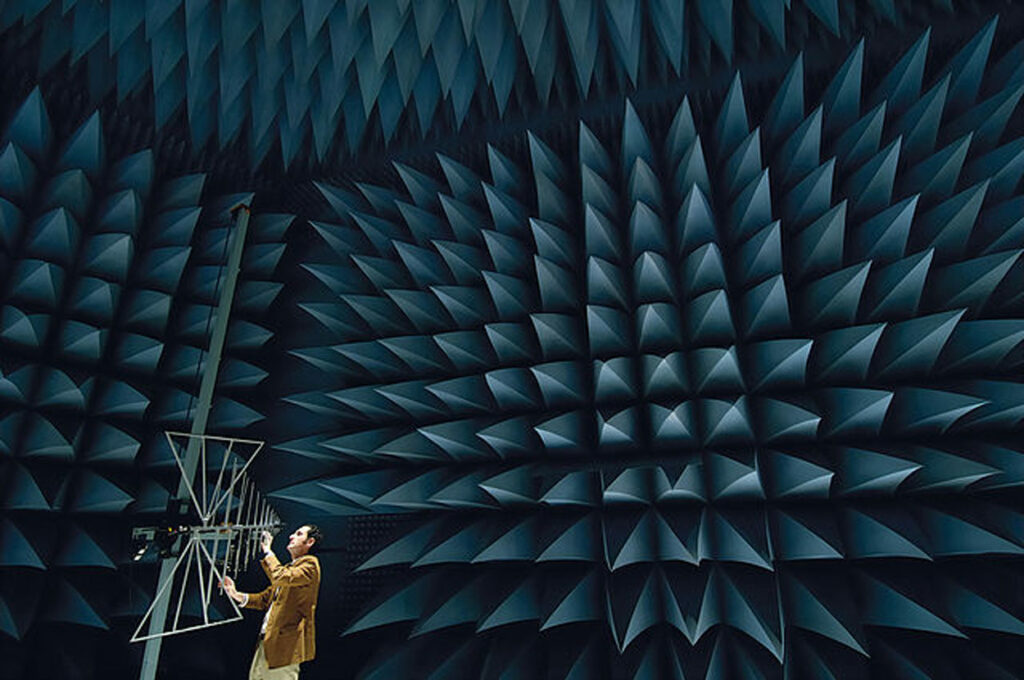Sound in the Silent Room
Here at Lux Virtual we primarily use visuals to communicate complex ideas. And while a picture can say a thousand words, we also learn and absorb information through our other senses like touch, taste, and hearing. Last week our friends at Arup Associates invited us to tour their incredibly high-tech SoundLab to show us how they use audio to inform and educate their clients around the world.
Arup is a highly respected global engineering firm known for taking on tricky and unconventional projects. One service they offer is acoustic consulting. If you happen to be building a new cathedral and you want to know exactly how the organ will sound sitting ten rows back and to the left, these are the people you want to talk to. They are able to take a digital model of your building from the architect and precisely compute how sound will bounce around the space. Every room has a unique acoustic “fingerprint” determined by how sound bounces off the different surfaces. Imagine going into a closet at home and clapping your hands loudly. Now imagine clapping your hands inside of a cathedral. The clapping sound coming from your hands will be the same, but it will sound very different because of the environment.

Once Arup’s engineers have determined the acoustic fingerprint of your new building they will invite you to experience it for yourself in their SoundLab. The SoundLab is a specially designed room that is covered in thick foam insulation to prevent echoes. Once the door is closed, the SoundLab is totally silent. In fact, it’s so weirdly quiet that your head starts to feel a bit woozy. Then, one of the engineers will fire up the 12-speaker surround-sound system and you are suddenly transported; you feel as though you are actually sitting inside a cathedral. You can hear organ music echoing off of the walls, the floor, and the ceiling. Even though your eyes are telling you that you are sitting inside a small dark room, your ears are convinced that you’re in a beautiful, cavernous cathedral. If you want to hear a more technical explanation of the process check out this video.
Experiencing the SoundLab firsthand was a very fun experience. The demonstration took us from a church to a rainforest to a concert in New York in the span of a few minutes. But even though was serious fun, Arup uses their SoundLab for serious business. In one scenario they were able to show a client how different thicknesses of window glass would change the sound inside of a hospital room being built next to an airport. It’s one thing to look at a piece of paper that tells you statistics about sound-dampening windows. It’s another thing entirely to feel like you’re actually sitting in a hospital room listening to airplanes fly by time and time again, being able to change the glass in the windows with the touch of a button.
The thing that impressed me the most about the SoundLab was how quickly it communicates something that is very hard to describe: how a particular space will sound. There is a phenomenal amount of science that has gone into building the SoundLab and the digital acoustic models, but from the clients’ perspective it is dead simple. Just walk into a room, sit down, and you will hear exactly what your new building will sound like. That’s good communication and our hats are off to Arup Associates for inventing such an amazing tool.
